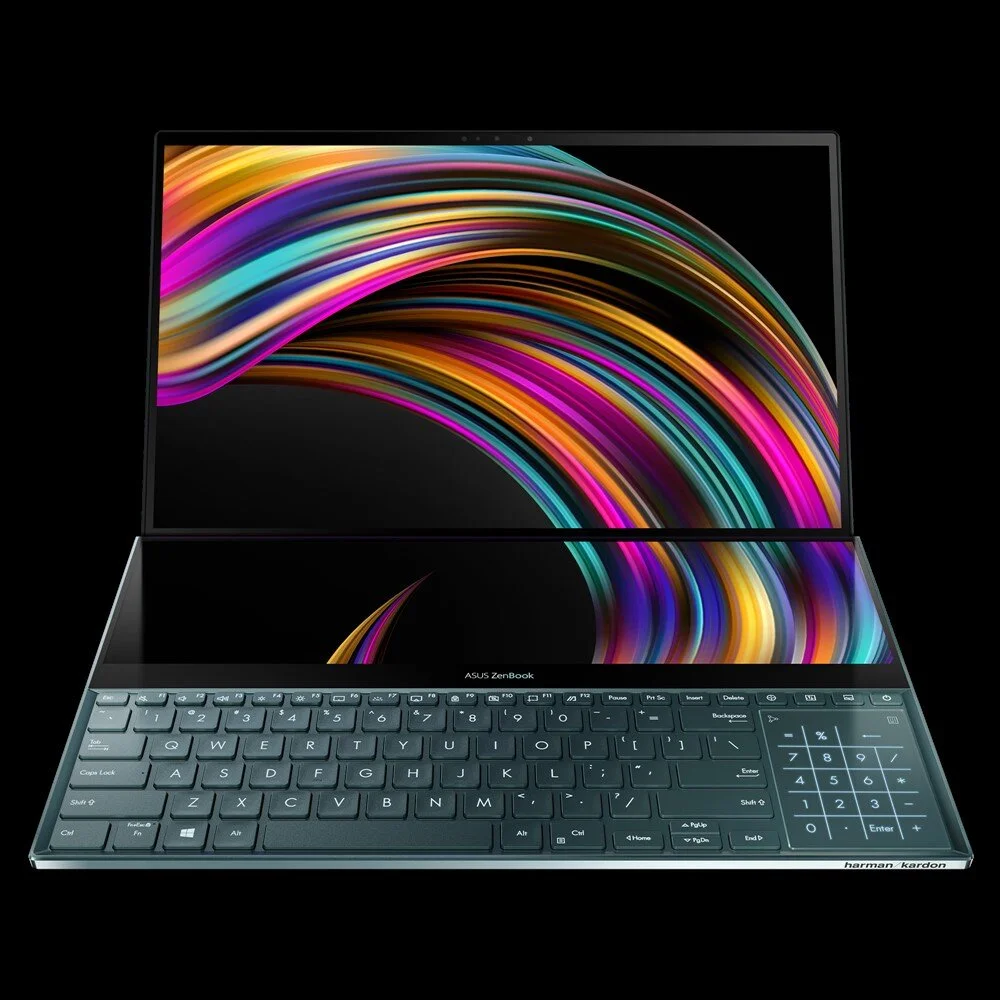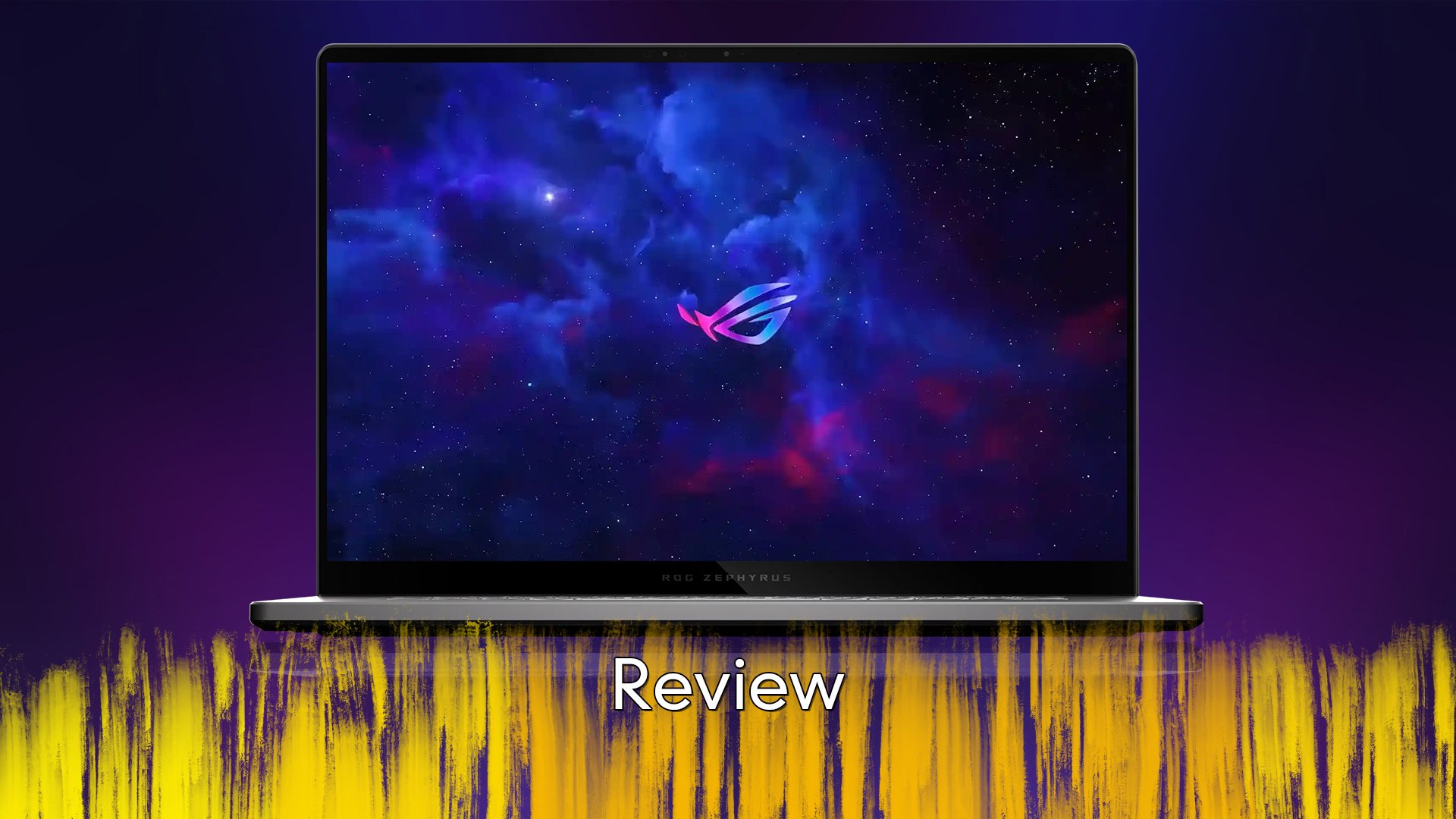Asus ZenBook Pro Duo

It seems that everyone releases a laptop these days, that has something special about it, be it a fancy track pad, or the ability to flip the screen over, there is no end to gimmicks. However, with the Asus ZenBook Pro Duo, the addition is very much the opposite of a gimmick and instead is a functional and worthwhile addition, however, does that justify the cost.
The first thing you need to get out of the way, is that the second screen, is just that a second screen, it does not do anything more than a second screen would normally do, but with that out of the way, the fact that there is a second screen, on a laptop is amazing. The ScreenPad Plus, as they are calling it, offers up a whole host of new options for those who work on the go, especially if you are into content creation. The Pro Duo does come in a few models, so those with limited budgets will be able to pick up one for themselves, but the lower prices, do limit the specs that you are given to play with. The model in question that Asus provided to me for review was the UX581GV, which comes packed with some of the latest tech, which made it possible to handle almost everything I threw at it, so let’s start with the internals.
The model I had was packed with an Intel Core i9-9980HK CPU, which ran at a beefy 2.5GHz, but can be overclocked up to double, if you are someone who does that. Combined with that CPU was a NVIDIA GeForce RTX 2060, with 6gb of RAM on board, which when paired with a massive 32gb of DDR4 RAM, running at 2666MHz, meant that the laptop ran so smoothly, it was insane. In terms of storage, the model was packed with a 1tb SSD, which is supported by the PCIe 4.0 connection type, giving you fast speeds for data management. All that power inside means that almost every program and game I threw at the laptop, ran without issue, some game had issues, but they are more related to the games, than the hardware. If you are looking for one of the most powerful laptops, at least for now, on the market then you should take a good look at the ZenBook Pro Duo.
Of course, power means nothing, if you have no need of it and that is where the ScreenPad Plus comes into its own, but of course, works best when paired to the 15.6inch screen. The main screen, the one everyone will see first, is a 4K display and sports a normal 16:9 aspect ratio, which lets games shine on it, but also looks a treat when doing things like video editing. The screen has a minor bezel and while not the smallest I have seen, is small enough that it is nothing you will notice at random. The ScreenPad Plus is almost the same dimension, at least as far as inches goes, as it comes in at a nice 14inches, and while it runs at 4K, the resolution is half of the main display, but still a decent 3840 x 1100. When you pair the two together, you can get some serious work done and that was where I tested things the most.
Running things like Chrome on the ScreenPad Plus was a great way of having my Twitter feed visible at all times, but not taking up my main display, much like how people do on desktops. Where the ScreenPad Plus shines though is that it lets you have multiple windows open, at one point I had Twitter, Gmail and Imgur, all running on the bottom screen and was able to see everything without issue, thanks to the sites scaling their content to match the window size. As moving applications between the two screens, can be something you want to make as easy as possible, the laptop has a host of quick access features, which when activated, will do a lot. The easiest one to explain is the App Switcher, which takes the active window from the main display and drops it on the ScreenPad Plus, letting you keep working faster. Other ones let you use both screens for one window, letting content scroll across both screens, and Task Swap, which just flips the screens, moving the content from one to the other.
For all that it does well, there is one that is quite odd and that is Handwriting, which as the name might imply, lets you take your own native handwriting into typed text. The laptop does come with a pen, to help make that easier, but I had issues with it detecting my unique handwriting, on top of that, as the placement of the screen is above the keyboard, I always kept my arm elevated, for fear of hitting the keys, which is not a comfortable way to write. The other function that the laptop offers is that of a grouping tool which lets you save pre-sets, like having Photoshop on one screen, a file viewer on the ScreenPad Plus, but with a different selection, you can have others replacement them, the only downside, if they are not open, it takes a bit to get them running. The largest downside to this, is that Windows already offers a similar function, so it feels like a bit of a waste.
When it comes to the case, there are some good things and some bad things, but let’s start with the good, the case has a really unique way to help keep it cool, which is perfect for when you game. The screen when you open it up, actually has the rear of the case fold under, which in turn lifts up the space and the more you open, the large that gap becomes. One the left side of the device, you get your power connection, a HDMI and USB-A port, whereas on the right it is one USB-A and a USB-C, it is also where you shall find the headphone port. One either side, you will also find ventilation slots, for airflow as well, another nice touch. On the downside though, the angle of your top screen, determines the angle of your bottom screen, as if you have it open to much, the ScreenPad Plus becomes easier to see, but at the expensive of the top one. The other downside is that the keyboard is moved to one side, which is not a big issue, but takes some getting used to, more so when you consider some of the placement of the keys, the trackpad, does also double as a number pad, for those times you want that handy.
As I mentioned before, the screen is a 4K screen and being able to play games on the go, or at least wherever I set up the laptop was fun, the one that I sunk the most time into was Borderlands 3, which ran like a dream at 1080p, but for some reason barely hit 20fps when in 4K and again, I put that down to the game, not the laptop. One of the games I love to throw at devices is DOOM from 2016 and yes, the game is old now, but as the game requires a decent setup to run properly, I consider it a decent test of any hardware. Running DOOM was simple, the game autodetected all the right settings and just ran, the best part was though, that the long load times I have become used to on other platforms and my main PC, almost vanished, thanks to the speed of that SSD. The other thing I tested out, was Photoshop, which has been known to be a system hog, especially when you start getting into large photos or multiple layered projects and while I am no master with the program, I was able to throw a range of tests at it, and the laptop ran them without issue. Again, the ScreenPad Plus came into effect here, being able to have my layers on the bottom screen, alongside my properties, meant that my main display was all about the object, something that made it far easier to work on.
Now with all that power, does not come great responsibility, however it does come with a lot of weight, 2.5kg on the laptop alone to be exact, which is before you add in the beefy power supply brick. That weight does mean it is not as portable that I would have liked it to be, with the weight at the rear of the device as well, it never really felt like it sat firm in my bag. Of course, if I had it for a longer period of time, then it may have proved to be something to adjust to and that would have been fine, but out of the box, it is a beast in terms of weight. The downside to all that weight is that it does not appear to have been thrown into the battery, with a 70w battery being packed in the case, which provided me with only a few scant hours of use, before it had to back on the charge. While I could live with 5 hours, I did not get closed to that, so for those who want to take it on long plane flights, you might find yourself needing to source something else to keep you occupied.
Those looking for a powerhouse of a laptop, that lets them be as productive on the go, as if they were at home, really need to look at the ZenBook Pro Duo. The dual screen on a laptop is nothing short of amazing and with the options that the ScreenPad Plus to you, it lets you do so much more than you thought possible. The specs of the higher end model mean that it is a solid gaming device, though the poor battery life means you will only get to do that for a little while, or at least tether yourself to an outlet. Based on the asking price of the model I reviewed, there are cheaper ways to game on the go and cheaper ways to create content on the go, but the ability to combine them into a singular device like this, is well worth the asking price.










